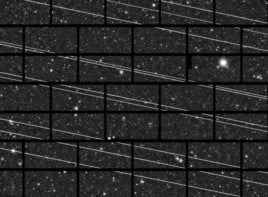Matin Durrani counts down the most signifcant physics Nobels between 2000 and 2025
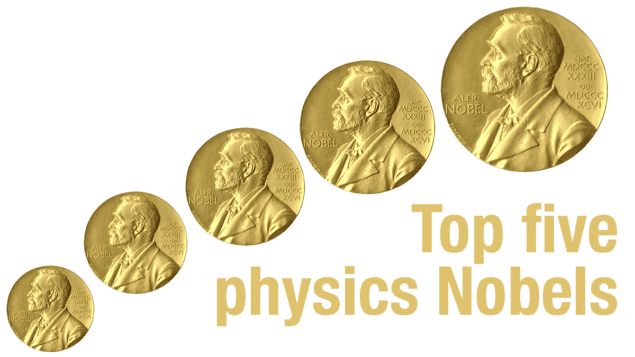
With the 2025 Nobel Prize for Physics due to be unveiled on Tuesday 7 October, Physics World has been getting in the mood by speculating who might win. It’s a prediction game we have fun with every year – and you can check out our infographic to make your own call.
Quantum physics is our hot favourite this time round – it’s the International Year of Quantum Science and Technology and the Nobel Committee for Physics aren’t immune to wider events. But whoever wins, you know that the prize will have been very carefully considered by committee members.
Over the 125 years since the prize was first awarded, almost every seminal finding in physics has been honoured – from the discovery of the electron, neutrino and positron to the development of quantum mechanics and the observation of high-temperature superconductivity.
But what have been the most significant physics prizes of the 21st century? I’m including 2000 as part of this century (ignoring pedants who say it didn’t start till 1 January 2001). During that time, the Nobel Prize for Physics has been awarded 25 times and gone to 68 different people, averaging out at about 2.7 people per prize.
Now, my choice is entirely subjective, but I reckon the most signficant prizes are those that:
- are simple to understand;
- were an experimental or theoretical tour-de-force;
- have long-term implications for science and open new paths;
- expose deeper questions at their heart;
- were on people’s bucket lists and/or have long, historical links;
- were won by people we’d heard of at the time;
- are of wider interest to non-physicists or those with only a passing interest in the subject.
So with that in mind, here’s my pick of the five top physics Nobel prizes of the 21st century. You’ll probably disagree violently with my choice so e-mail us with your thoughts.
5. Neutrino oscillation – 2015 prize
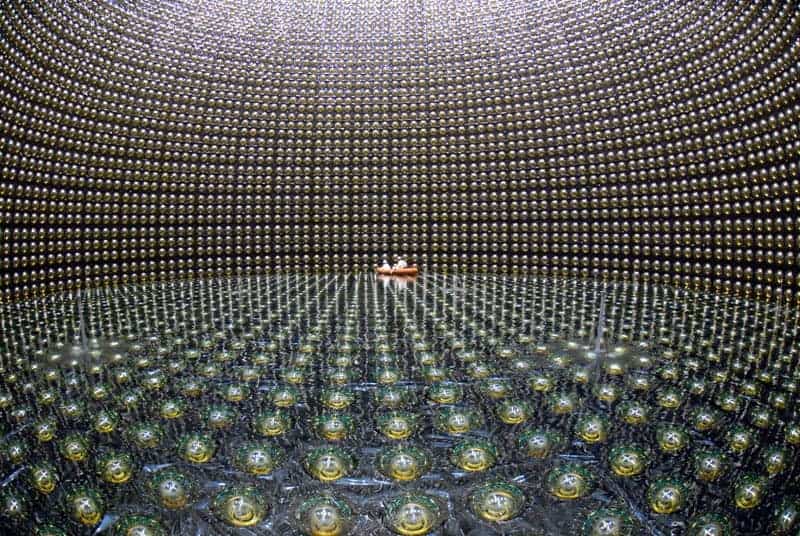
Coming in at number five in our list of top physics Nobels of the 21st century is the discovery of neutrino oscillation, which went to Takaaki Kajita and Art McDonald in 2015. The neutrino was first hypothesized by Wolfgang Pauli back in 1930 as “a desperate remedy” to the fact that energy didn’t seem to be conserved when a nucleus emits an electron via beta decay. Fred Reines and Clyde Cowan had won a Nobel prize in 1995 for the original discovery of neutrinos themselves, which are chargeless particles that interact with matter via the weak force and are fiendishly hard to detect.
But what Kajita (at the Super-Kamikande experiment in Japan) and McDonald (at the Sudbury Neutrino Observatory in Canada) had done is to see them switch, or “oscillate”, from one type to another. Their work proved that these particles, which physicists had assumed to be massless, do have mass after all. This was at odds with the Standard Model of particle physics – and isn’t it fun when physics upends conventional wisdom?
What’s more, the discovery of neutrino oscillation explained why Ray Davies and John Bahcall had seen only a third of the solar neutrinos predicted by theory in their famous experiment of 1964. This discrepancy arose because solar neutrinos are oscillating between flavours as they travel to the Earth – and their experiment had detected only a third as it was sensitive mainly to electron neutrinos, not the other types.
4. Bose–Einstein condensation – 2001 prize
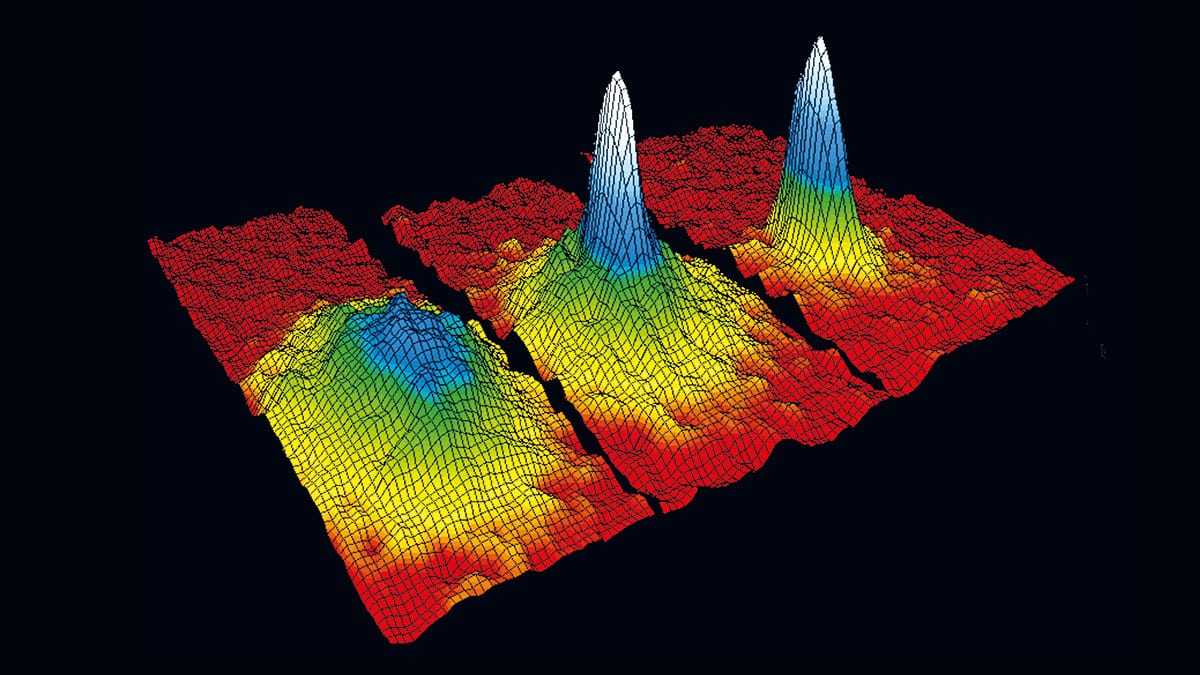
At number four in our list of the best physics Nobel prizes of the 21st century is the 2001 award, which went to Eric Cornell, Wolfgang Ketterle and Carl Wieman for creating the first Bose–Einstein condensates (BECs). I love the idea that Cornell and Wieman created a new state of matter – in which particles are locked together in their lowest quantum state – at exactly 10.54 a.m. on Monday 5 June 1995 at the JILA laboratory in Boulder, Colorado.
First envisaged by Satyendra Nath Bose and Albert Einstein in 1924, Cornell and Wieman created the first BEC by cooling 2000 rubidium-87 atoms to 170nK using the then new techniques of laser and evaporative cooling. Within a few months, Wolfgang Ketterle over at the Massachusetts Institute of Technology also made a BEC from 500,000 sodium-23 atoms at 2 μK.
Since then hundreds of groups around the world have created BECs, which have been used for everything from slowing light to making “atom lasers” and even modelling the behaviour of black holes. Moreover, the interactions between the atoms can be finely controlled, meaning BECs can be used to simulate properties of condensed-matter systems that are extremely difficult – or impossible – to probe in real materials.
3. Higgs boson – 2013 prize
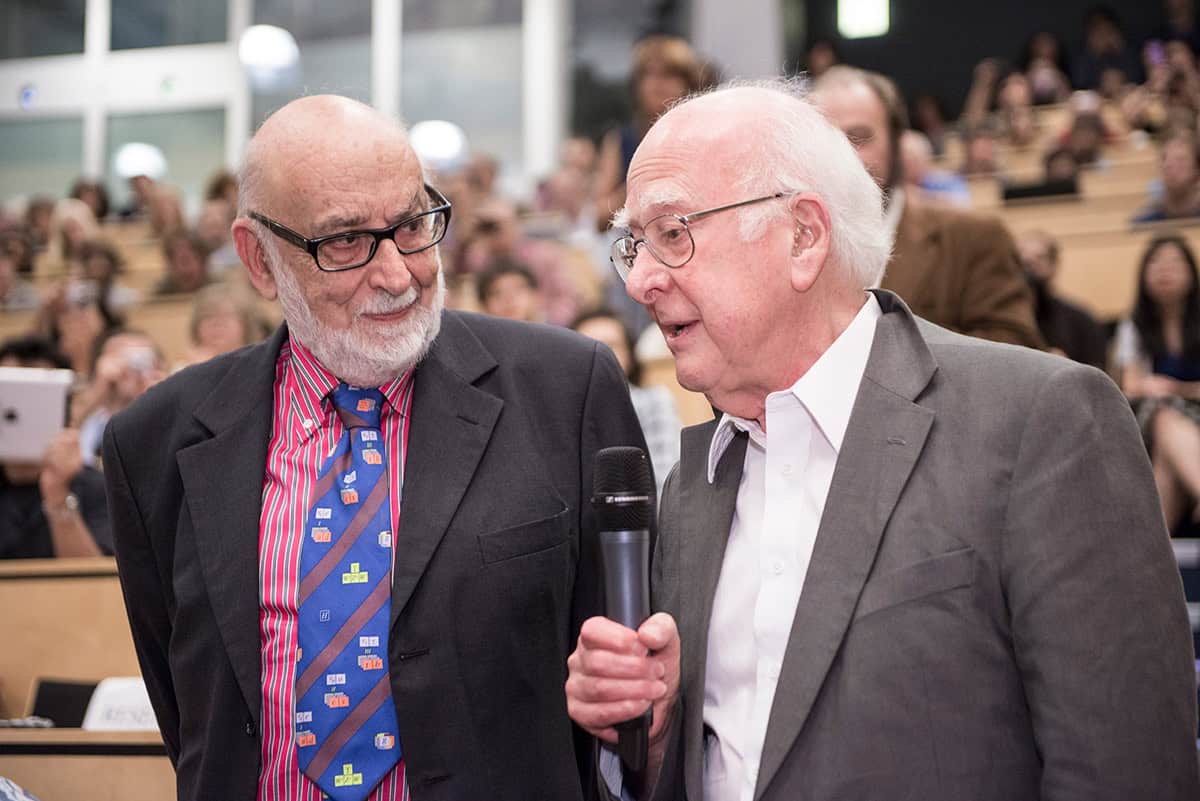
Coming in at number three is the 2013 prize, which went to François Englert and the late Peter Higgs for discovering the mechanism by which subatomic particles get mass. Their work was confirmed in 2012 by the discovery of the so-called Higgs boson at the ATLAS and CMS experiments at CERN’s Large Hadron Collider.
Higgs and Englert didn’t, of course, win for detecting the Higgs boson, although the Nobel citation credits the ATLAS and CMS teams in its citation. What they were being credited for was work done back in the early 1960s when they published papers independently of each other that provided a mechanism by which particles can have the masses we observe.
Higgs had been studying spontaneous symmetry breaking, which led to the notion of massless, force-carrying particles, known as Goldstone bosons. But what Higgs realized was that Goldstone bosons don’t necessarily occur when a symmetry is spontaneously broken – they could be reinterpreted as an additional quantum (polarization) state of a force-carrying particle.
The leftover terms in the equations represented a massive particle – the Higgs boson – avoiding the need for a massless unobserved particle. Writing in his now-famous 1964 paper (Phys. Rev. Lett. 13 508), Higgs highlighted the possibility of a massive spin-zero boson, which is what was discovered at CERN in 2012.
That work probably got more media attention than all Nobel prizes this century, because who doesn’t love a huge international collaboration tracking down a particle on the biggest physics experiment of all time? Especially as the Standard Model doesn’t predict what its mass should be so it’s hard to know where to look. But it doesn’t take top slot in my book because it “only” confirmed what we had expected and we’re still on the look-out for “new physics” beyond the Standard Model.
2. Dark energy – 2011 prize
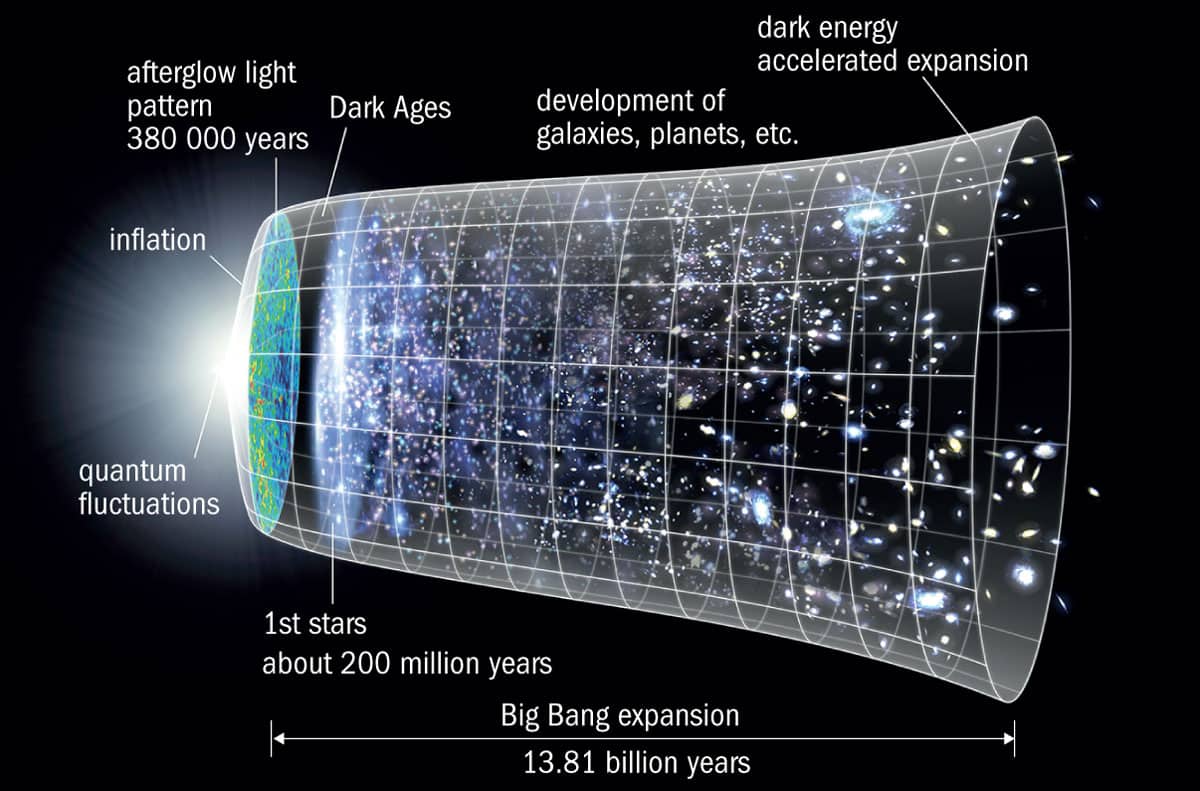
Taking second place in our list is the discovery that the expansion of the universe is not slowing down – but accelerating – thanks to studies of exploding stars called supernovae. As with so many Nobel prizes these days, the 2011 award went to three people: Brian Schmidt, who led the High-Z Supernovae Search Team, and his colleague Adam Riess, and to Saul Perlmutter who led the rival Supernova Cosmology Project.
Theirs was a pretty sensational finding that implied that about three-quarters of the mass–energy content of the universe must consist of some weird, gravitationally repulsive substance, dubbed “dark energy”, about which even now we still know virtually nothing. It had previously been assumed that the universe would – depending on how much matter it contains – either collapse eventually in a big crunch or go on expanding forever, albeit at an ever more gentle pace.
The teams had been studying type 1a supernovae, which always blow up in the same way when they reach the same mass, which means that they can be used as “standard candles” to accurately measure distance in the universe. Such supernovae are very rare and the two groups had to carry out painstaking surveys using ground-based telescopes and the Hubble Space Telescope to find enough of them.
The teams thought they’d find that the expansion of the universe is decelerating, but as more and more data piled up, the results only appeared to make sense if the universe has a force pushing matter apart. The Royal Swedish Academy of Sciences said the discovery was “as significant” as the 2006 prize, which had gone to John Mather and the late George Smoot for their discovery in 1992 of the minute temperature variations in the cosmic microwave background – the fossil remnants of the large-scale structures in today’s universe.
But to me, the accelerating expansion has the edge as the implications are even more profound, pointing as they do to the composition and fate of the cosmos.
1. Gravitational waves – 2017 prize
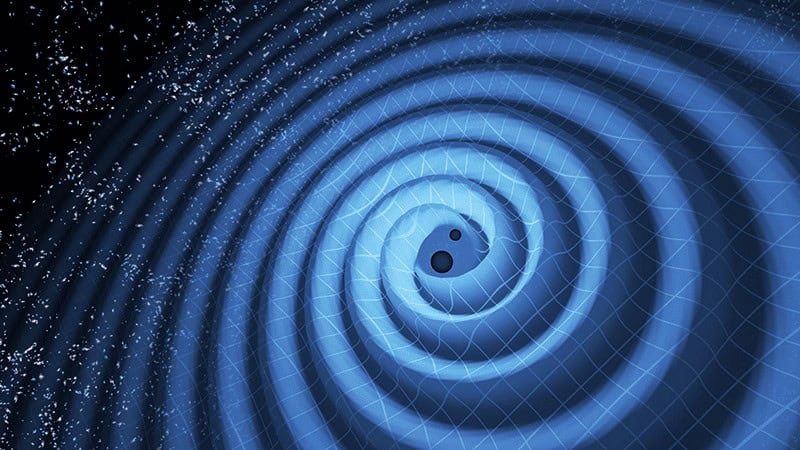
And finally, the winner of the greatest Nobel Prize for Physics of the 21st century is the 2017 award, which went to Barry Barish, Kip Thorne and the late Rainer Weiss for the discovery of gravitational waves. Not only is it the most recent prize on my list, it’s also memorable for being a genuine first – discovering the “ripples in space–time” originally predicted by Einstein. The two LIGO detectors in Livingston, Louisiana, and Hanford, Washington, are also astonishing feats of engineering, capable of detecting changes in distance tinier than the radius of the proton.
The story of how gravitational waves were first observed is now well known. It was in the early hours of the morning Monday 14 September 2015, just after staff who had been calibrating the LIGO detector in Livingston had gone to bed, when gravitational waves created from the collision of two black holes 1.3 billion light-years away hit the LIGO detectors in the US. The historic measurement dubbed GW150914 hit the headlines around the world.

The curious history of Nobel prizes: from lighthouses to gravitational waves
More than 200 gravitational-wave events have so far been detected – and observing these ripples, which had long been on many physicists’ bucket lists, has over the last decade become almost routine. Most gravitational-wave detections have been binary black-hole mergers, though there have also been a few neutron-star/black-hole collisions and some binary neutron-star mergers too. Gravitational-wave astronomy is now a well-established field not just thanks to LIGO but also Virgo in Italy and KAGRA in Japan. There are also plans for an even more advanced Einstein Telescope, which could detect in a day what it took LIGO a decade to spot.
Gravitational waves also opened the whole new field of “multimessenger astronomy” – the idea that you observe a cosmic event with gravitational waves and then do follow-up studies using other instruments, measuring it with cosmic rays, neutrinos and photons. Each of these cosmic messengers is produced by distinct processes and so carries information about different mechanisms within its source.
The messengers also differ widely in how they carry this information to the astronomer: for example, gravitational waves and neutrinos can pass through matter and intergalactic magnetic fields, providing an unobstructed view of the universe at all wavelengths. Combining observations of different messengers will therefore let us see more and look further.
- Think we’re right or spectacularly wrong with our pick of the top five Nobel physics prizes of the 21st century? Get in touch by e-mailing us with your thoughts.

